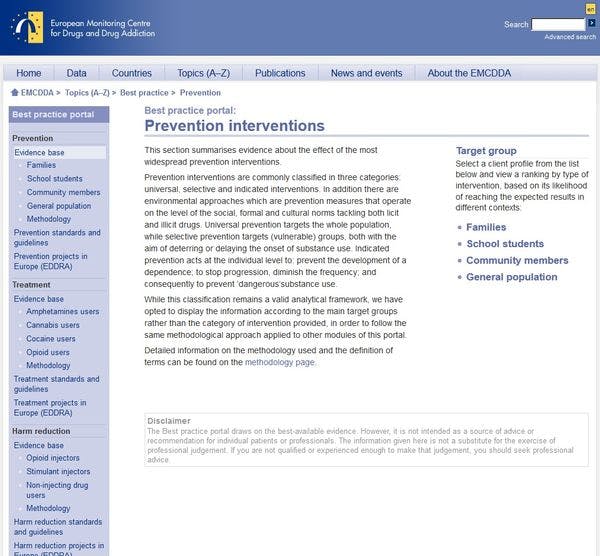EMCDDA: Prevention interventions
This section summarises evidence about the effect of the most widespread prevention interventions.
Prevention interventions are commonly classified in three categories: universal, selective and indicated interventions. In addition there are environmental approaches which are prevention measures that operate on the level of the social, formal and cultural norms tackling both licit and illicit drugs. Universal prevention targets the whole population, while selective prevention targets (vulnerable) groups, both with the aim of deterring or delaying the onset of substance use. Indicated prevention acts at the individual level to: prevent the development of a dependence; to stop progression, diminish the frequency; and consequently to prevent ’dangerous‘substance use.
While this classification remains a valid analytical framework, we have opted to display the information according to the main target groups rather than the category of intervention provided, in order to follow the same methodological approach applied to other modules of this portal.
Detailed information on the methodology used and the definition of terms can be found on the methodology page.
Keep up-to-date with drug policy developments by subscribing to the IDPC Monthly Alert.
Related Profiles
- European Monitoring Centre on Drugs and Drug Addiction (EMCDDA)
